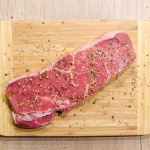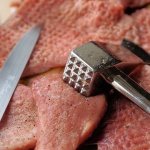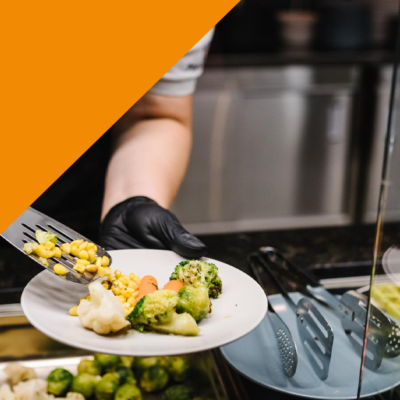top of mind news
- 5 Ways Catering Offers Profitable Growth Opportunity
- How to Budget for Restaurant Maintenance
- Why Restaurants Need to Open the Door to Cultural Trends
- 4 Ways to Ensure Sanitation Front of House
the farm
Poultry
 For the holiday week ending July 6th, chicken slaughter jumped 5.5% above a year ago, and, coupled with heavier bird weights, pushed ready-to-cook (RTC) production near 9% over last year. Take note that production schedules have been on the rise, with the six-week rolling average of chicken output running 4.4% over last year. Despite increasing chicken availabilities, chicken wing prices remain elevated as grocery store demand continues to remove supplies from the marketplace. Breast meat prices continue to struggle but look for production to ease into the late summer, which should support the chicken breast markets. Yet, production is expected to rise during Q4.
For the holiday week ending July 6th, chicken slaughter jumped 5.5% above a year ago, and, coupled with heavier bird weights, pushed ready-to-cook (RTC) production near 9% over last year. Take note that production schedules have been on the rise, with the six-week rolling average of chicken output running 4.4% over last year. Despite increasing chicken availabilities, chicken wing prices remain elevated as grocery store demand continues to remove supplies from the marketplace. Breast meat prices continue to struggle but look for production to ease into the late summer, which should support the chicken breast markets. Yet, production is expected to rise during Q4.
Beef
Beef production for the first full week of July was down .5% from the prior year, despite slaughter levels being .8% larger. Lighter carcasses continue to temper production but have supported the fat trim markets beyond seasonal expectations. The beef 50s have been holding firm in the upper $0.90’s and the grinds have been finding support as well. Grocery store ads for hamburgers continue to outperform seasonal expectations. Yet, anticipate seasonally lower beef trim and grind prices moving forward. Additionally, the middle meats are expected to weaken further into early August but should rebound ahead of Labor Day.
Pork
Pork production continues to rise, with last week’s harvests producing near 9% more pork than the year prior. Pork prices this summer have been on the defensive amid the larger production schedules, with the USDA boxed beef cutout moving counter seasonally lower from May well into mid-July. But recently the pork markets have started to rebound, with the most upside noted across the ham and picnic primals. The pork belly markets are expected to catch upside momentum heading into the late summer, and prices may exceed year ago levels.
The Sea
Seafood
 Snow crab import prices are very close to a year ago and at historically expensive levels. Despite this, the U.S. imported 23.1 more snow crab than the previous year. The Alaskan snow crab fishing season is just a few months away. But expectations are that the Alaskan Bering Sea quota will remain relatively small. Elevated snow crab prices could persist.
Snow crab import prices are very close to a year ago and at historically expensive levels. Despite this, the U.S. imported 23.1 more snow crab than the previous year. The Alaskan snow crab fishing season is just a few months away. But expectations are that the Alaskan Bering Sea quota will remain relatively small. Elevated snow crab prices could persist.
The Garden
Produce
 The lettuce markets remain elevated. Challenging weather has shortened supplies and demand has been resilient. Total iceberg lettuce shipments last week did improve slightly from the previous week but were 16% less than the same week last year. The risk in the iceberg lettuce market from here however could be to the downside in the near term. The five-year average move for iceberg lettuce prices during the next two weeks is a decline of 12.4%. Avocado prices are expected to remain historically inflated throughout the balance of July, if not longer.
The lettuce markets remain elevated. Challenging weather has shortened supplies and demand has been resilient. Total iceberg lettuce shipments last week did improve slightly from the previous week but were 16% less than the same week last year. The risk in the iceberg lettuce market from here however could be to the downside in the near term. The five-year average move for iceberg lettuce prices during the next two weeks is a decline of 12.4%. Avocado prices are expected to remain historically inflated throughout the balance of July, if not longer.
The kitchen sink
Dairy
The spot butter market is the highest since May 2018. Butter output in May was down 4.2% year-over-year. Butter demand is strong. Butter stocks disappearance from January through May was up 5.8% versus 2018. Since 2014, the average move for spot butter prices during the next six weeks was up 5.3%. The cheese markets continued to weaken this past week. May cheese production was 1.6% better than the prior year. History says that cheese prices can still rise in the next few weeks, but lessening exports may temper those gains. The cheese markets usually peak in late-August.
Grains
 The corn and soybean crops are progressing under continued challenging conditions. As of July 14th, just 19% of the corn crop had reached the silking stage which compares to 59% last year and the five-year average of 42%. Estimates are that the national corn crop is roughly three weeks behind schedule. Feed prices will remain volatile.
The corn and soybean crops are progressing under continued challenging conditions. As of July 14th, just 19% of the corn crop had reached the silking stage which compares to 59% last year and the five-year average of 42%. Estimates are that the national corn crop is roughly three weeks behind schedule. Feed prices will remain volatile.
Oil
 Nearby WTI crude oil futures have fallen 6.2% since last week. Record domestic daily crude oil production along with growing concerns over a global economic slowdown are influencing prices downward. Still, there is key support at $50/bbl.
Nearby WTI crude oil futures have fallen 6.2% since last week. Record domestic daily crude oil production along with growing concerns over a global economic slowdown are influencing prices downward. Still, there is key support at $50/bbl.








